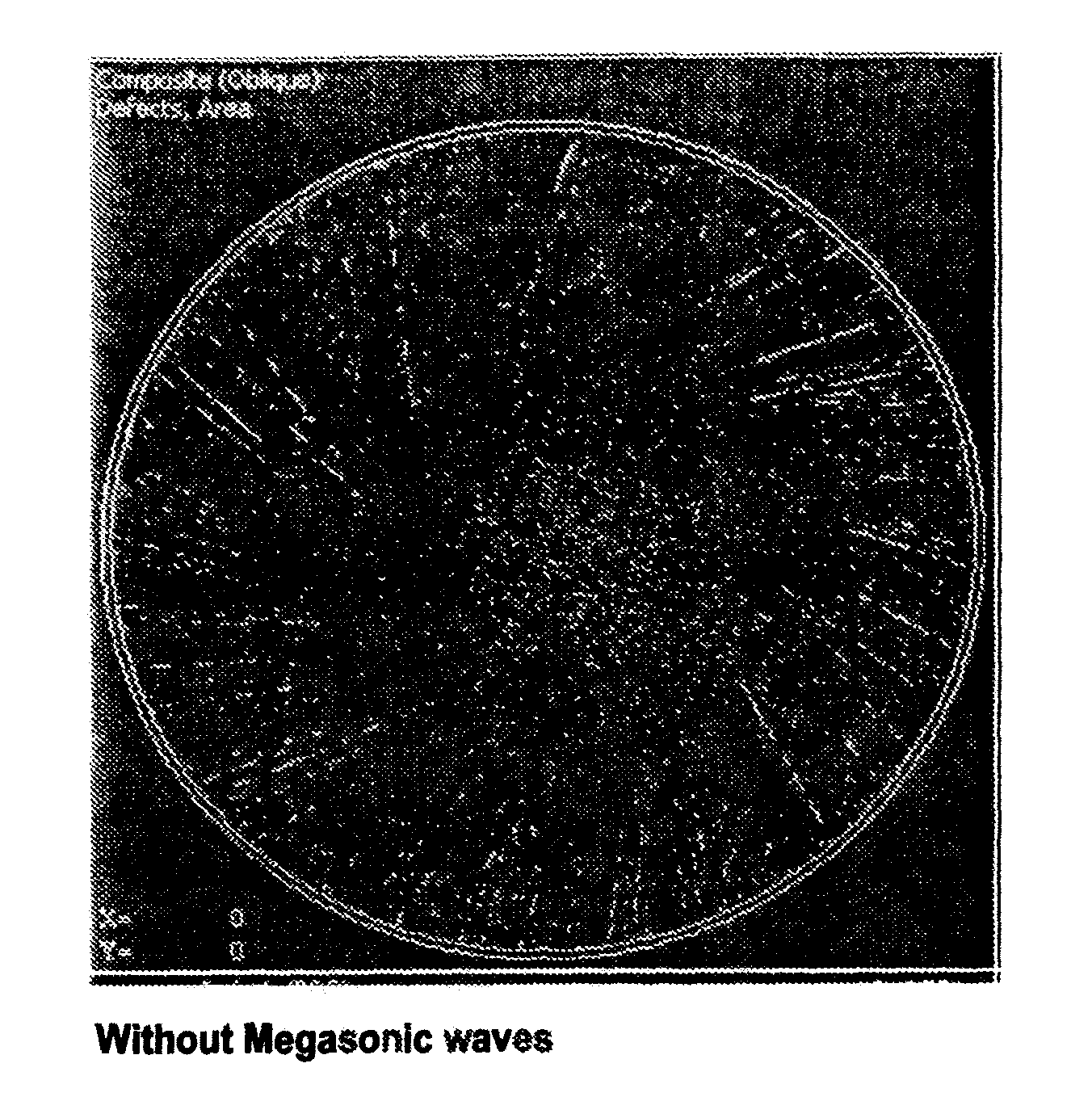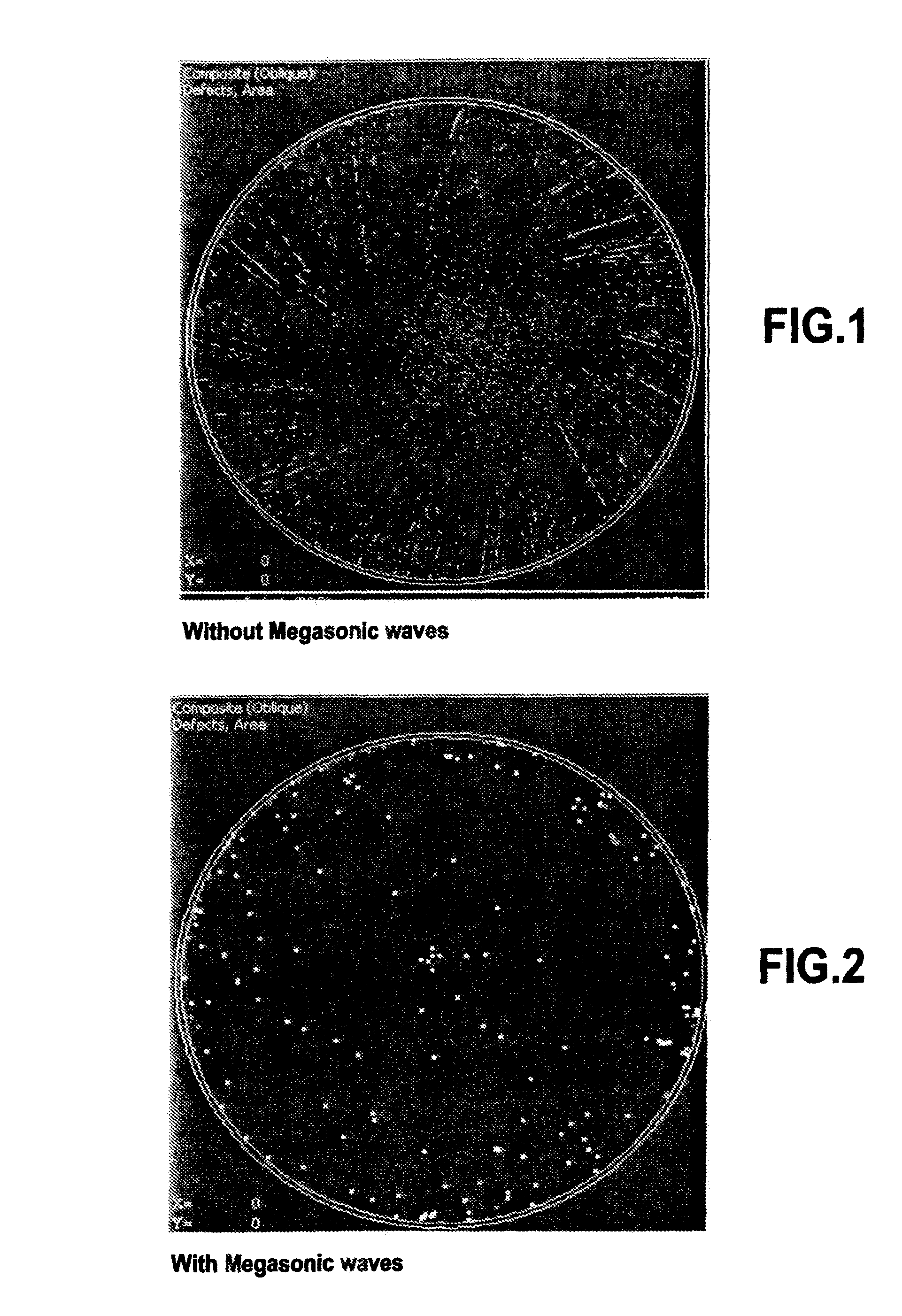Reduction of watermarks in HF treatments of semiconducting substrates
a technology of semiconducting substrates and watermarks, applied in the field of semiconducting substrates, can solve the problems of reducing the effect of energy consumption, causing surface defects known as watermarks, and not being able to annul the consequences of original surface defects, etc., and achieve the effect of reducing watermarks
- Summary
- Abstract
- Description
- Claims
- Application Information
AI Technical Summary
Benefits of technology
Problems solved by technology
Method used
Image
Examples
examples
[0062]In a non-limiting illustration of embodiments according to the second aspect of the present invention, a bulk silicon substrate was cleaned with a variety of HCl / HF mixtures as set out in the following Table 1. The drying conditions used involved drying by rotation (SpinDry) à 2200 RPM during 1 min.
[0063]The surfaces obtained were analysed by SP1 (by light scattering). So-called “watermarks” consist in a series of surface flaws showing up as a succession of points on the photos starting from the center to the edge of the wafer to form a linear line. Where lines of surface flaws were observed, the presence of watermarks is indicated by a “Yes” in the corresponding column of the Table 1.
[0064]
TABLE 1Effect on watermarks of treatment with mixtures of HF and HCl[HF] %[HCl] %Time of treatmentRinsing timePresence of(by(bywith HF-HClwith deionisedwatermarksweight)weight)mixture (s)water (s)(Yes / No)1.511010No1.501010Yes1.511025No1.501025Yes1.513510No0.503525Yes0.513525Yes
[0065]Similar...
PUM
| Property | Measurement | Unit |
|---|---|---|
| pKa | aaaaa | aaaaa |
| frequency | aaaaa | aaaaa |
| frequency | aaaaa | aaaaa |
Abstract
Description
Claims
Application Information
 Login to View More
Login to View More - R&D
- Intellectual Property
- Life Sciences
- Materials
- Tech Scout
- Unparalleled Data Quality
- Higher Quality Content
- 60% Fewer Hallucinations
Browse by: Latest US Patents, China's latest patents, Technical Efficacy Thesaurus, Application Domain, Technology Topic, Popular Technical Reports.
© 2025 PatSnap. All rights reserved.Legal|Privacy policy|Modern Slavery Act Transparency Statement|Sitemap|About US| Contact US: help@patsnap.com


